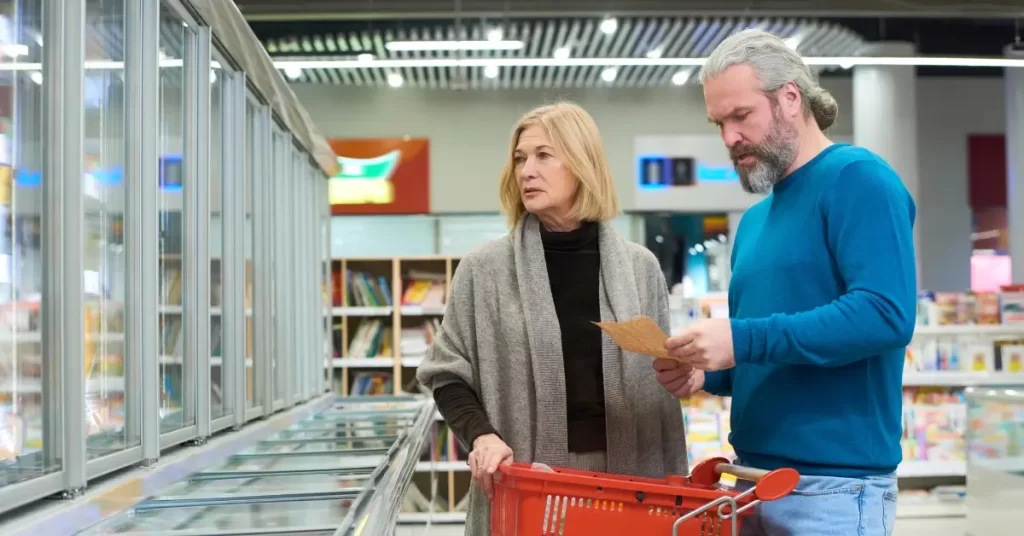
Imagine entering a store, and what meets your eyes are rows and rows of products stacked on the shelves. Sheesh! Wouldn’t that be overwhelming? No consumer would want to shop at a place lacking any sense of direction. In-store brands need to have compelling execution strategies. You may ask what in-store execution is or why it even matters if the store has what the customers want. In-store execution includes displaying, stocking, and promoting a product in a physical store. Just having the products is not going to bring in customers. Customers do not just pay attention to the display of the product but also to its pricing, placement, positioning (a little hard to believe, but it’s true!), and promotional offers.
Endcap and Display Control
What if our world was bleached of all colors? Doesn’t it sound bland? Colors add joy to the humdrum life, and business persons take full advantage of it. Sometimes, you might go to a store just to buy a few things and leave with much more than you intended. It all happens because brands use catchy display management strategies to engage customers.
Endcaps are part of display management, located at the end of all store islets. These shelves usually include items on sale or newly launched products. While shopping, customers subconsciously notice the endcap displays because they are right in front of them. Carefully strategized endcap display management helps brands increase sales and attract new customers.
Strategies for good In-store execution
Creating a successful strategy is not a bed of roses. Professionals go through a great deal to devise the perfect plan that best suits the prevailing situation. Creativity and hard work make an in-store execution successful and go a long mile. Impressive strategies and good display management skills increase the chance for brands to attract more traffic and encourage impulsive buying. Here are some of the most successful strategies brands use to attract customers.
Good first impression
The first thing that the customers see after entering the store is the layout and design of the place. Businesses should keep the physical appearance and safety of the store up to the mark. After the pandemic, people are crazy about hygiene, and brands should show that they care. Customers look for qualities like lighting, product shelves, sanitation, easy navigation signs, and cleanliness in the stores they visit.
Rhapsody’s Endcap and Display Management services help retail businesses optimize their in-store execution for maximum impact. Our team of experts provides tailored solutions that elevate the visual appeal of your products, increase sales, and enhance customer experience. With our comprehensive approach, we ensure that every aspect of your displays, from design to implementation, is executed flawlessly. Let Rhapsody help you take your retail game to the next level with our Endcap and Display Management services.
Cooperating Working Team
No matter how much you strive to provide an excellent customer experience, the human workforce plays a vital role in retaining customers. The behavior of the employees reflects the brand’s values, and you don’t want to look bad, right? Sometimes customers need assistance while deciding, and the employees must address their problems politely. The in-store team is also responsible for restocking the shelves on time. If the products run low, they must contact the higher-ups right away.
Learn from the Past
Brands need to pay attention to past trends and analyze what is good for them and what is not. Pinpointing past mistakes and rectifying them increases the chance of getting noticed. When people observe small changes in store management, they appreciate it and spread the good word.
Product Placement Matters
Brands tend to place their products where they are visible to everyone. Price tags and information panels assist customers in making a decision. A display of sale items near the entrance invites customers inside the store. So if you want to attract people, make the sale items visible to the passerby.
Update content and products.
Regularly change the display products and banners according to the need of time. People take notes while passing by, and if they notice new items regularly, they want to buy from you.
Make the customer visit an experience.
Customers remember brands when they get to be a part of their campaign drive. Brick-and-mortar stores are a perfect place to hold fun activities and make customers feel a part of their journey.
Inventory Management
Picture this, the customer spends time deciding what to buy, and after all the hassle, the product is unavailable in the store. How inconvenient would that be! Brands train their employees to stay vigilant and stock the inventory when necessary.
